Living History is an series showcasing just a small assortment of the more than 350,000 items housed at The Salvation Army Heritage Centre in Toronto. This month, we spotlight the many drums in the collection.
From the earliest days of The Salvation Army, General William Booth understood the key role music played in spreading the message of God’s love and taking the gospel to the streets. The Army needed to meet people where they were—and music was the key. Music, including the steady rhythm of a drum, helped to attract attention and curiosity from the public in the Army’s marches and open-air services. And familiar tunes, infused with new lyrics of hope and redemption, became an irresistible way to draw people in.
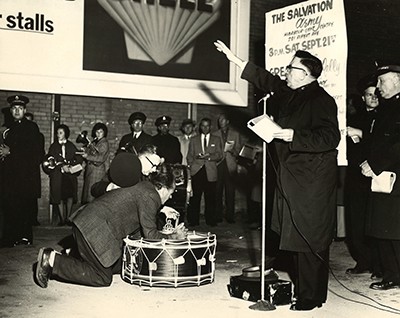
When the Army drum made its first appearance, some people said its use in religious meetings was nothing less than sacrilege, but General Booth claimed it was just as proper to “beat” the people into a salvation meeting as to “ring” them into church.
While the drum has always been an important part of the Salvation Army musical tradition, for Salvationists, it has always been more than an instrument. From the beginning, the drum’s supreme function was as a “mercy seat” in open-air meetings.
Major Nigel Bovey, former editor of the British War Cry, has called the humble drum “the outdoor mercy seat.” Thousands of people have knelt at it and claimed salvation from their sins.
“In Victorian England, it was the poor who often did not participate in church,” writes Major Steven Mark Cameron in Seeing Salvation: The Effectiveness of Preaching on the Sacramental Life in a Salvation Army Context. “Therefore the Army took the church to the street with their open-air meetings and brass bands. The mercy seat came as a bass drum that would be laid sideways on the ground so people could kneel and pray.”
The first Canadian reference to the drum used as a mercy seat is in the November 25, 1899, edition of The War Cry: “Ensign Burrows writes that he has had good times in Owen Sound and Meaford; at the former place they had three for salvation, and at Meaford seven, one of these in the open-air at the drum-head.”
As can be seen here, the Heritage Centre boasts a wonderful collection of drums, preserving forever our rich musical and spiritual tapestry.
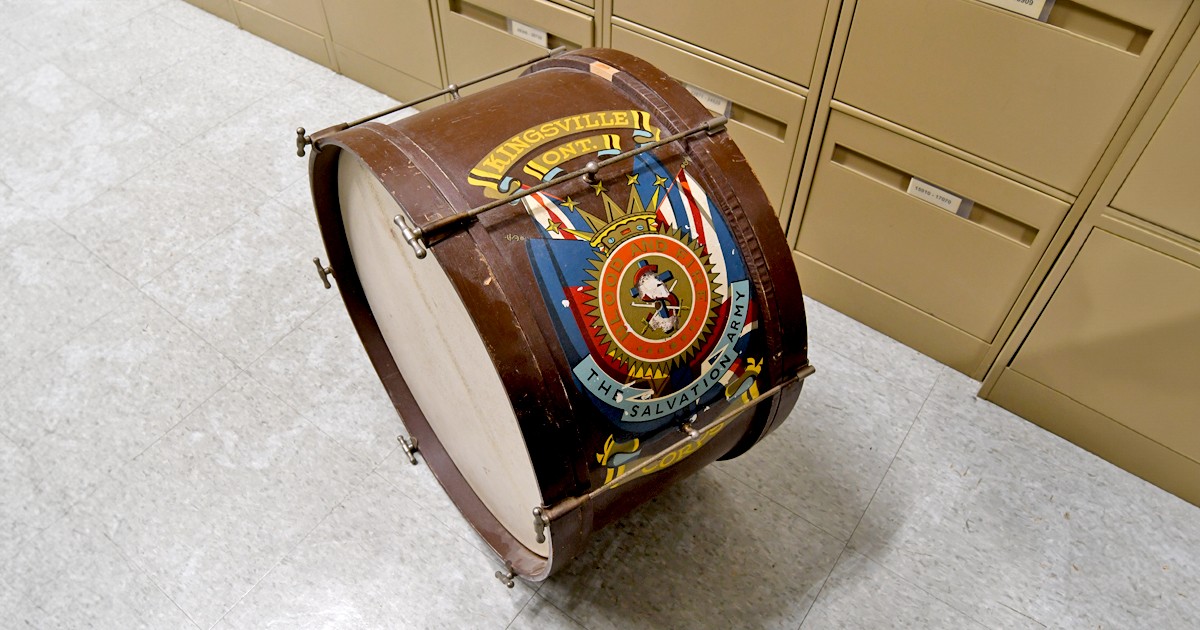
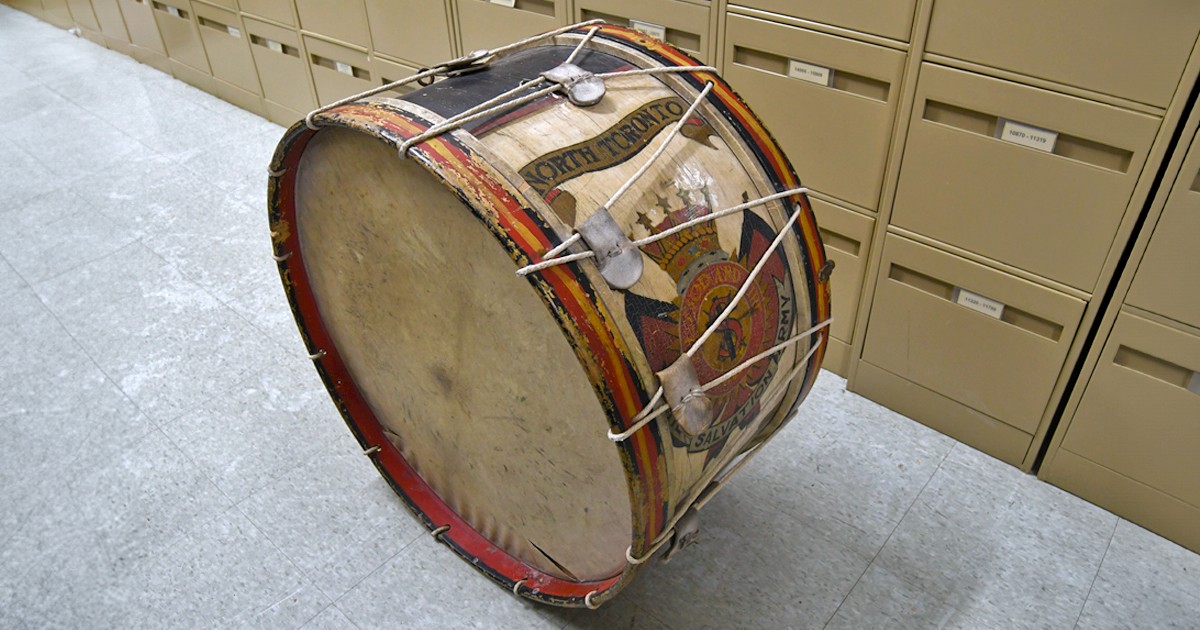
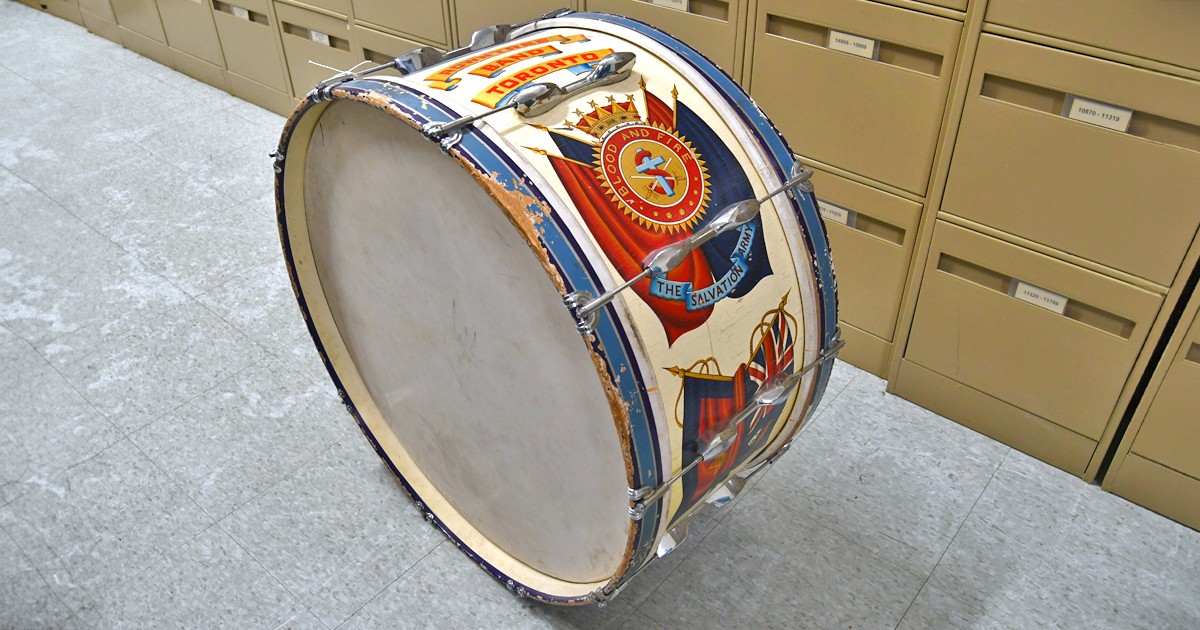
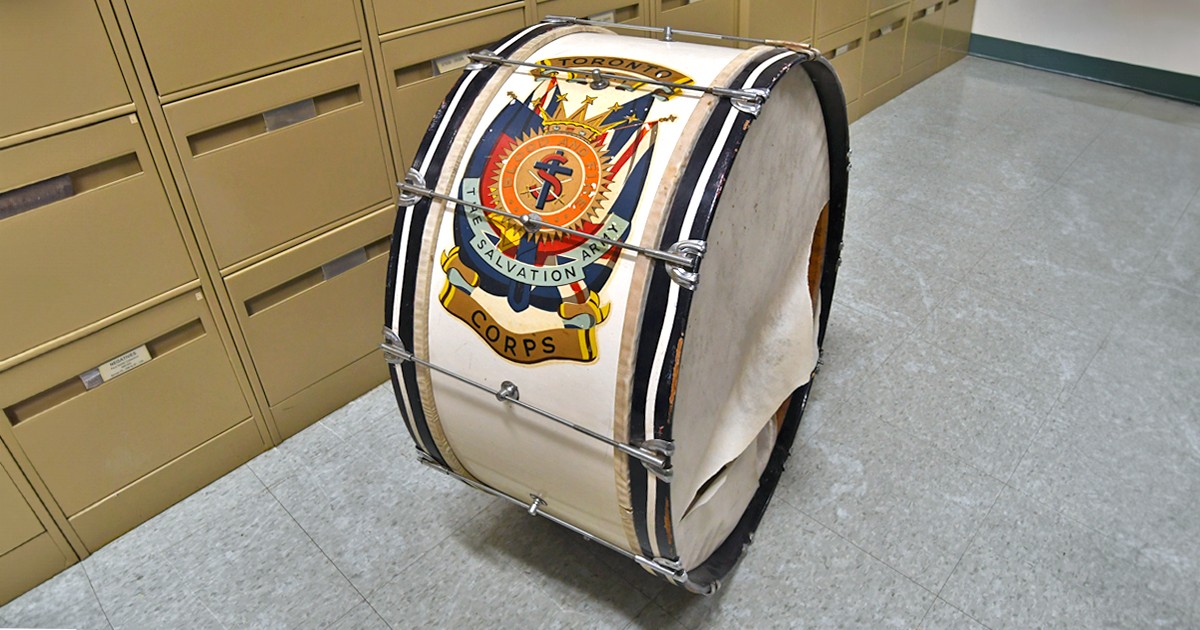
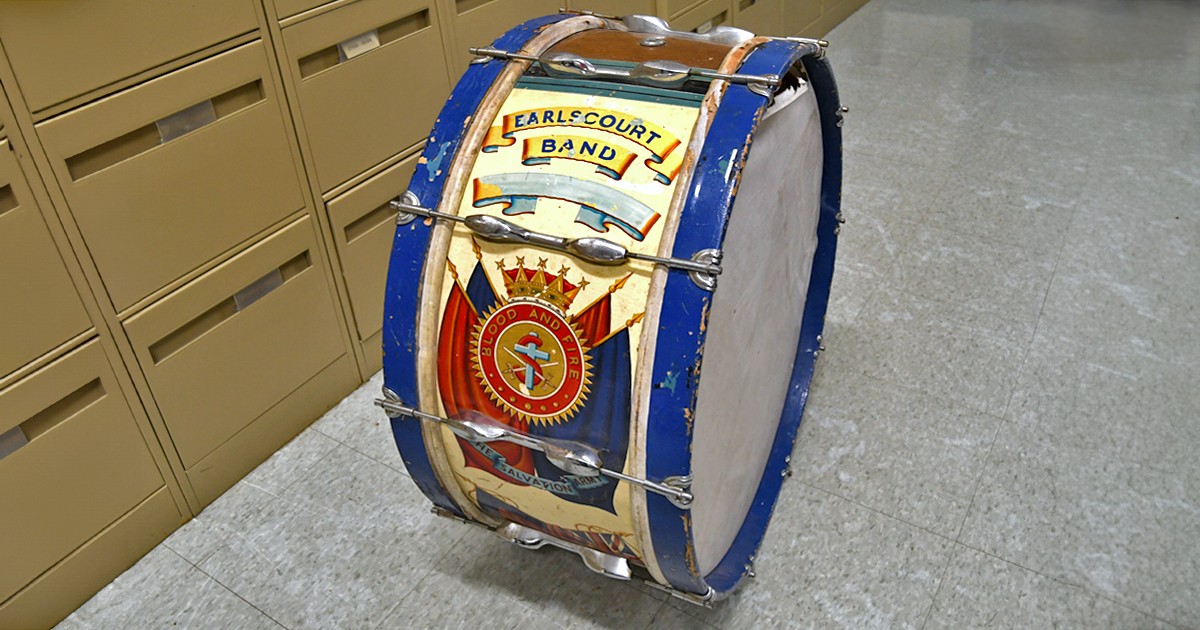
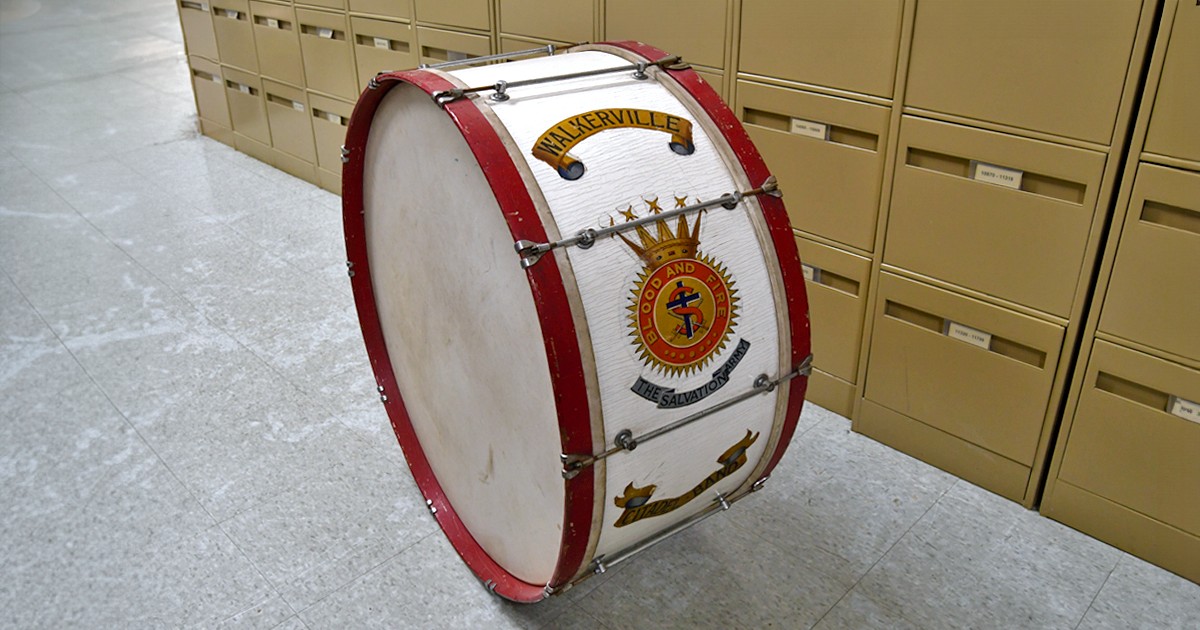
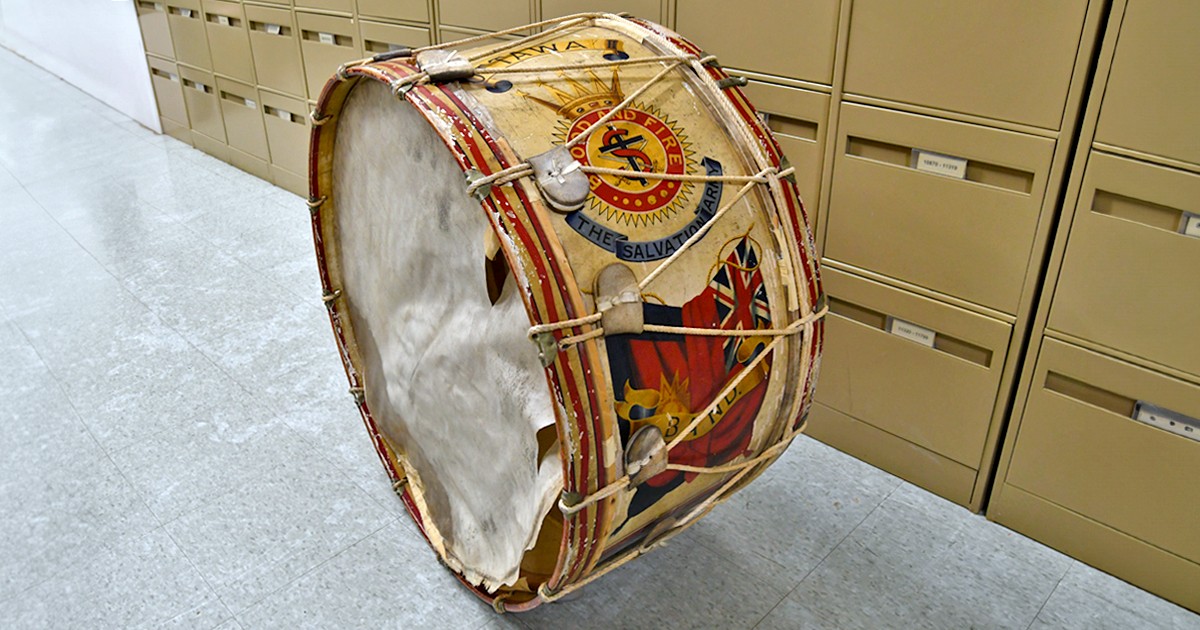
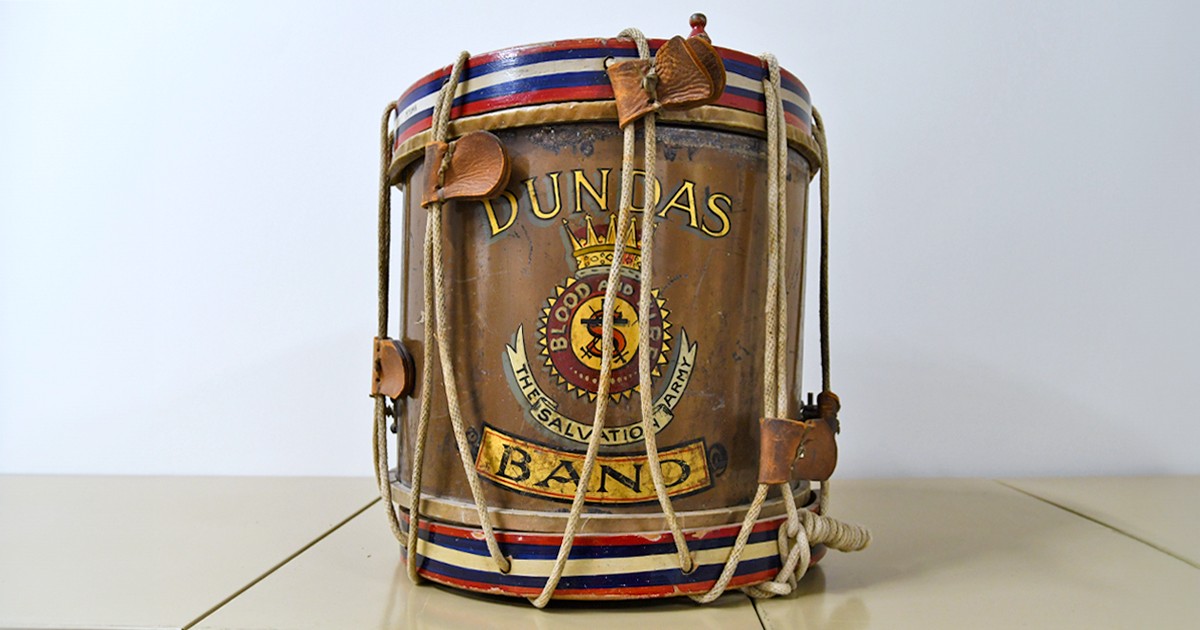
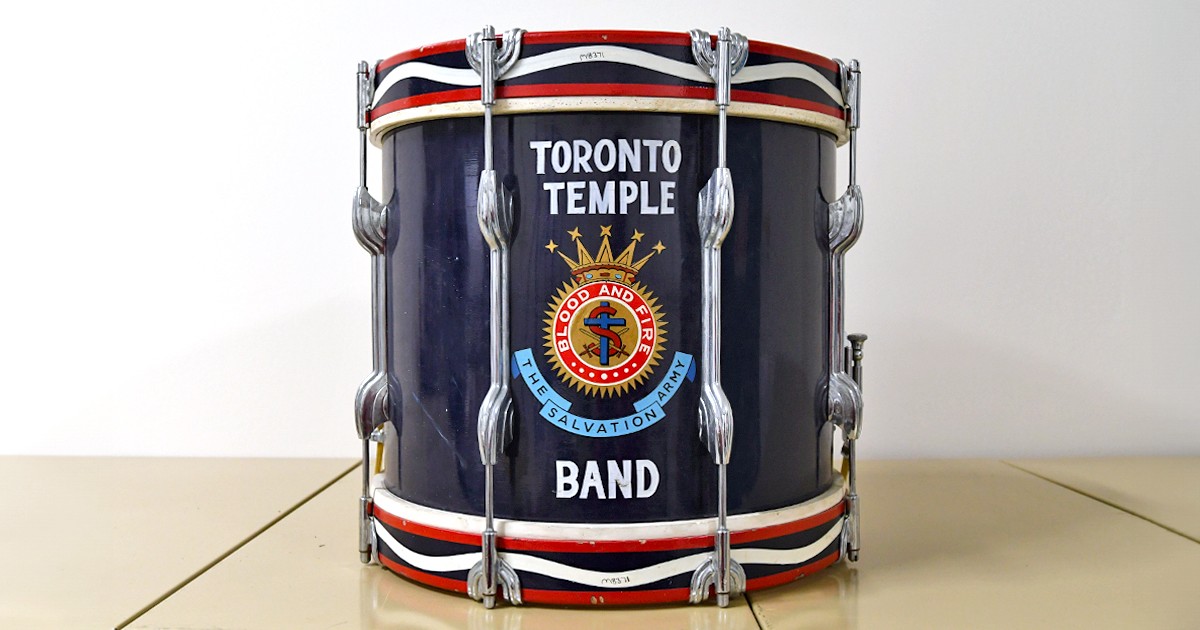
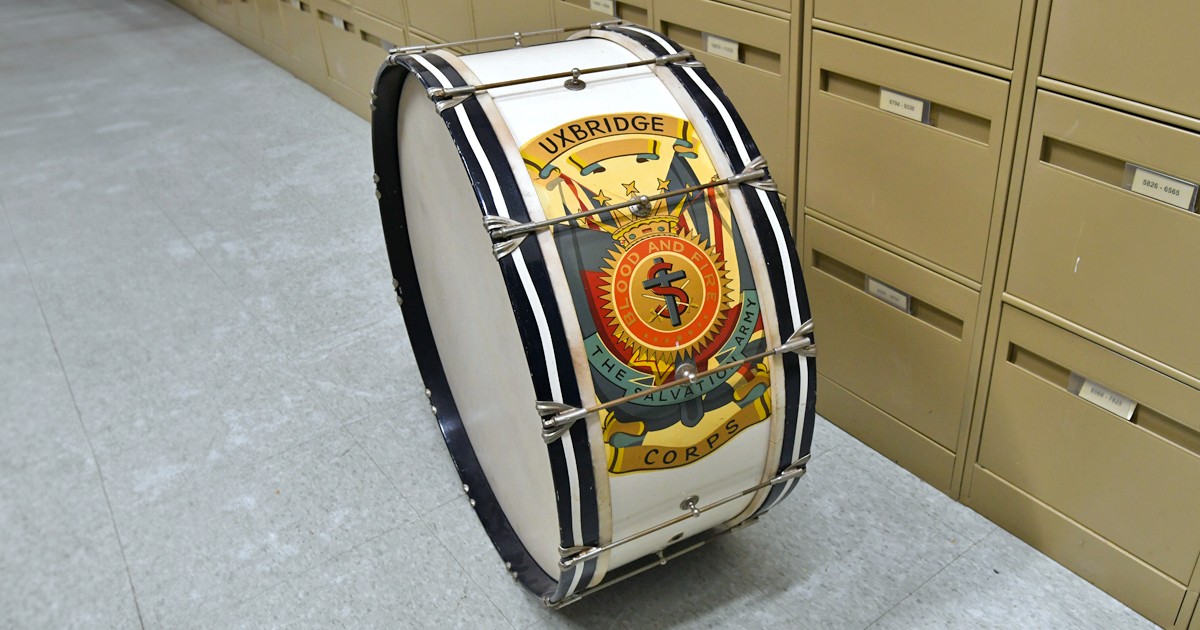
Photos: Camilo Mejia




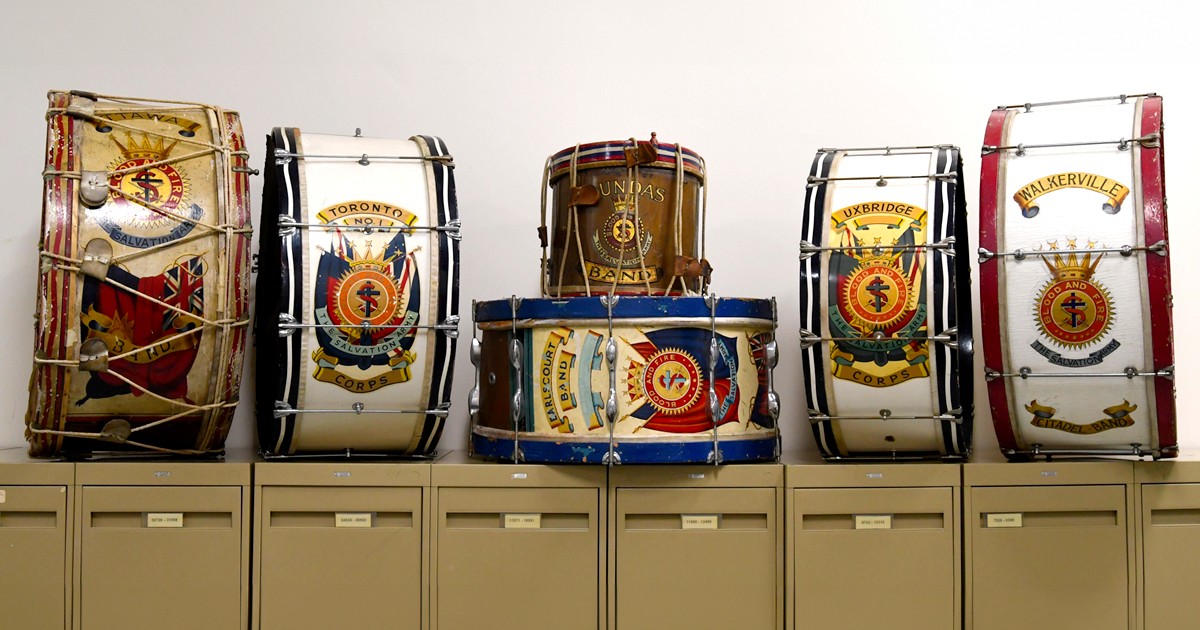
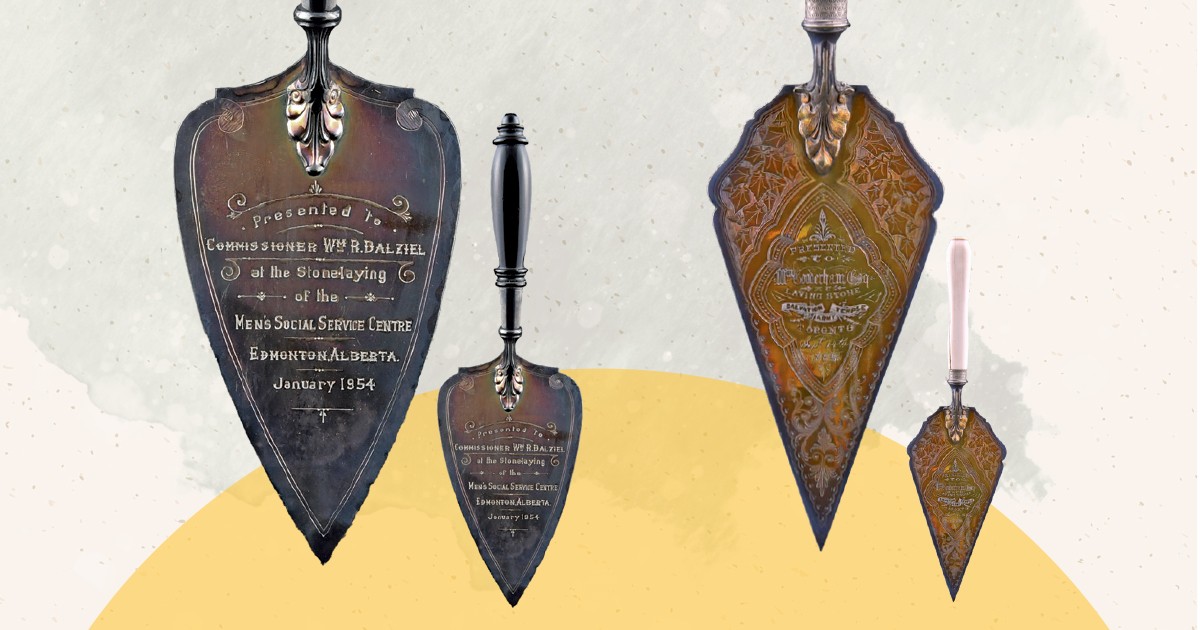
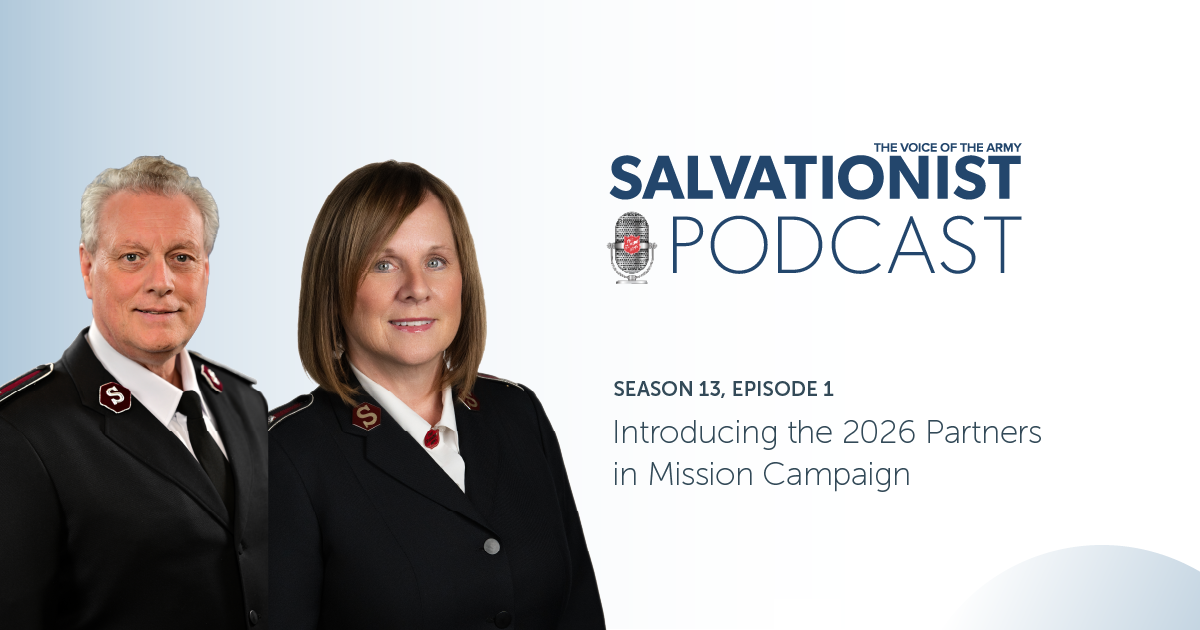
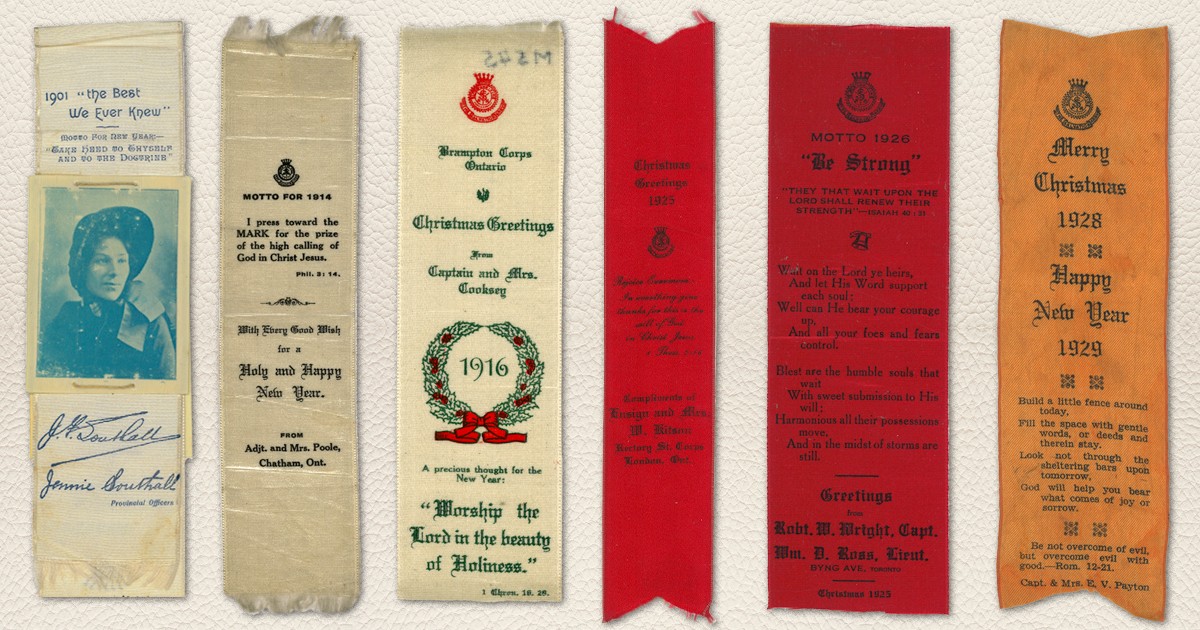


Leave a Comment